A government-funded study found that more than 90 percent of hermit crabs on Itu Aba Island (Taiping Island, 太平島) wore mollusk shells, not plastic debris, in a positive sign for the health of the atoll’s marine environment.
The National Academy of Marine Research on Friday said it conducted the study using pit traps in March, during the atoll’s dry season, and in July last year, during its wet season.
The study examined 615 captured specimens and identified three hermit crab species on the atoll: Coenobita rugosus, Coenobita brevimanus and Coenobita perlatus, it said.
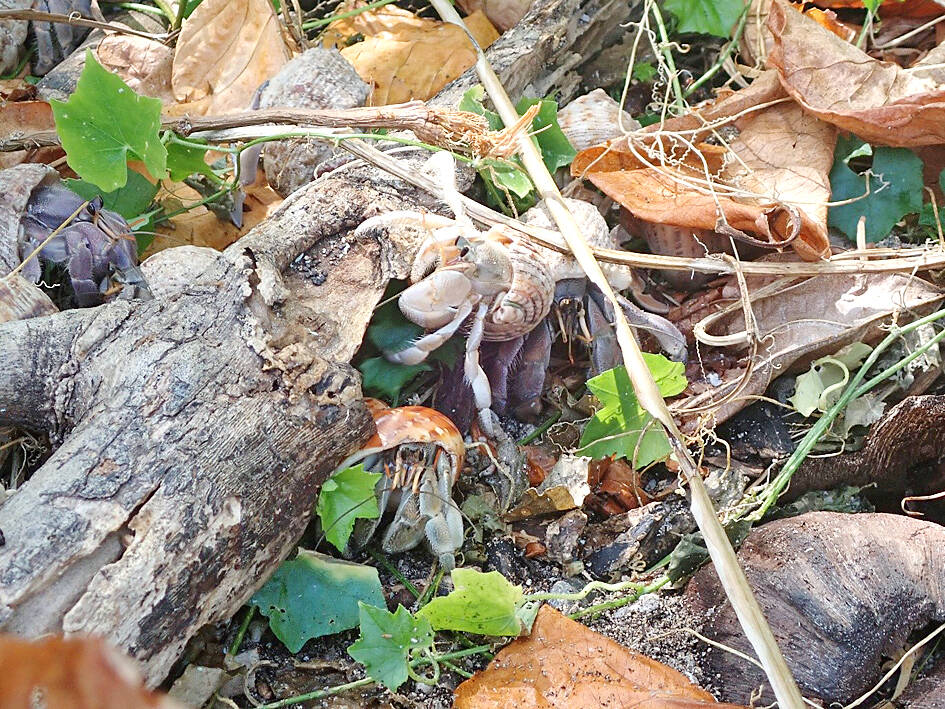
Photo courtesy of the National Academy of Marine Research
An overwhelming majority of the crabs inhabited mollusk shells despite the global mollusk shell scarcity linked to a decline in their populations, it said.
The academy said that 81 percent of C rugosus on the atoll wore shells of Turbinidae, while 13 percent wore shells of other mollusk families, and 6 percent wore the shells of giant African snails.
None of the 600 C rugosus wore trash, it said.
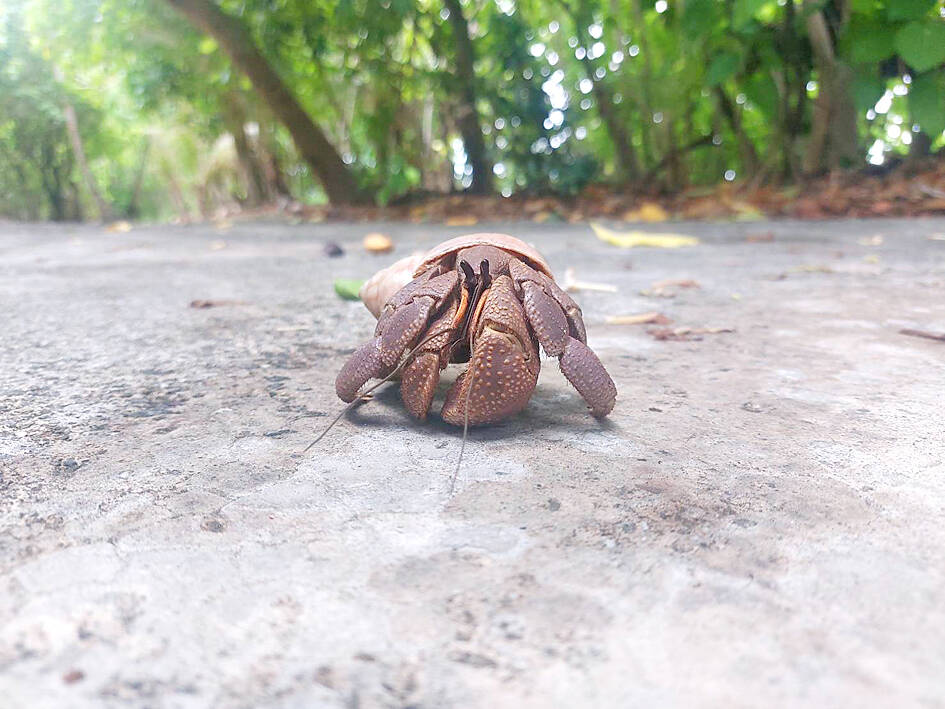
Photo courtesy of the National Academy of Marine Research
Hermit crabs wear mollusk shells as a form of defensive armor against predators and the tides, using their hooked tails to securely attach to the shells they inhabit, it said.
Some crabs lacking mollusk shells wear sea trash, it said.
Giant African snail shells, another commonly used substitute for mollusk shells, possess insufficient mass to anchor female hermit crabs, it said.
Taiwanese researchers in 2012 and 2020 found that respectively 94 percent and 73 percent of the hermit crabs on the Pratas Islands (Dongsha Islands, 東沙群島) wore giant African snail shells, it said.
As of last year, individual crabs from 10 out of the world’s 17 hermit crab species were found to wear trash in lieu of mollusk shells, it said.
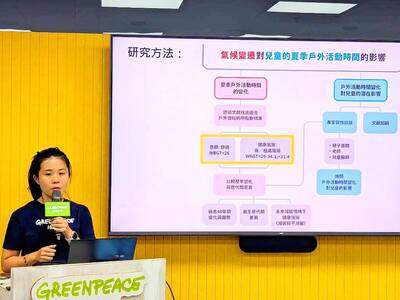
The government should improve children’s outdoor spaces and accelerate carbon reduction programs, as the risk of heat-related injury due to high summer temperatures rises each year, Greenpeace told a news conference yesterday. Greenpeace examined summer temperatures in Taipei, New Taipei City, Taoyuan, Hsinchu City, Taichung, Tainan and Kaohsiung to determine the effects of high temperatures and climate change on children’s outdoor activities, citing data garnered by China Medical University, which defines a wet-bulb globe temperature (WBGT) of 29°C or higher as posing the risk of heat-related injury. According to the Central Weather Administration, WBGT, commonly referred to as the heat index, estimates
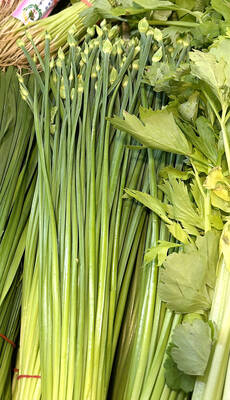
The Taipei Department of Health’s latest inspection of fresh fruit and vegetables sold in local markets revealed a 25 percent failure rate, with most contraventions involving excessive pesticide residues, while two durians were also found to contain heavy metal cadmium at levels exceeding safety limits. Health Food and Drug Division Director Lin Kuan-chen (林冠蓁) yesterday said the agency routinely conducts inspections of fresh produce sold at traditional markets, supermarkets, hypermarkets, retail outlets and restaurants, testing for pesticide residues and other harmful substances. In its most recent inspection, conducted in May, the department randomly collected 52 samples from various locations, with testing showing
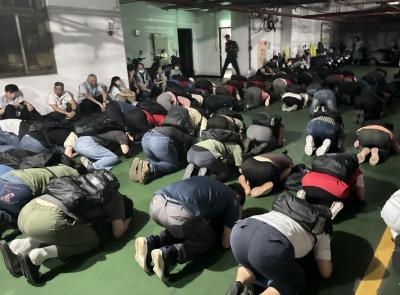
Taipei and other northern cities are to host air-raid drills from 1:30pm to 2pm tomorrow as part of urban resilience drills held alongside the Han Kuang exercises, Taiwan’s largest annual military exercises. Taipei, New Taipei City, Keelung, Taoyuan, Yilan County, Hsinchu City and Hsinchu County are to hold the annual Wanan air defense exercise tomorrow, following similar drills held in central and southern Taiwan yesterday and today respectively. The Taipei Mass Rapid Transit (MRT) and Maokong Gondola are to run as usual, although stations and passenger parking lots would have an “entry only, no exit” policy once air raid sirens sound, Taipei
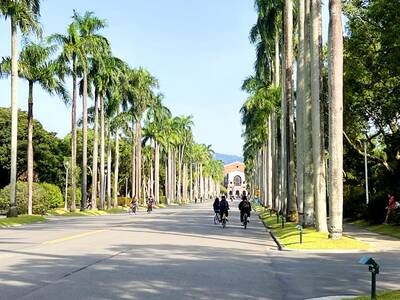
Taipei placed 14th in the Quacquarelli Symonds (QS) Best Student Cities 2026 list, its highest ever, according to results released yesterday. With an overall score of 89.1, the city climbed 12 places from the previous year, surpassing its previous best ranking of 17th in 2019. Taipei is “one of Asia’s leading higher-education hubs,” with strong employer activity scores and students “enjoying their experience of the city and often keen to stay after graduation,” a QS staff writer said. In addition to Taipei, Hsinchu (71st), Tainan (92nd), Taichung (113th) and Taoyuan (130th) also made QS’ list of the top 150 student cities. Hsinchu showed the